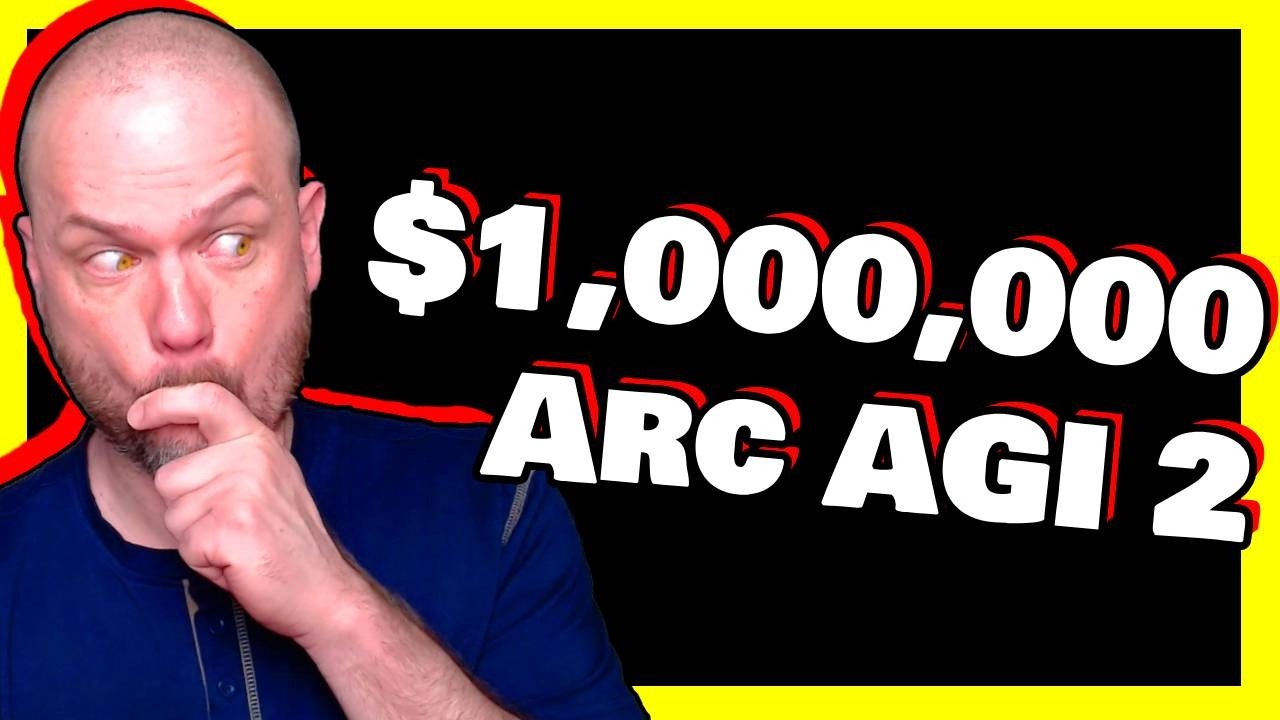The video introduces the ARC AGI Benchmark 2, which features a new set of challenging tasks aimed at testing AI models’ efficiency and problem-solving abilities, with a grand prize of $1,000,000 for achieving 85% accuracy at a cost of 42 cents per task. It emphasizes the importance of skill acquisition and contextual adaptability in AI, while highlighting the current limitations of AI compared to human performance in these areas.
The video discusses the return of the ARC AGI Benchmark, which now includes the new ARC AGI Prize for 2025. This updated benchmark features a completely new set of challenging questions designed to test AI models in ways that even the most advanced systems struggle with, while humans can still pass. The video highlights that the previous model, the 03 low, spent around $200 per task but achieved a score of less than 5%. The new benchmark is designed to be resistant to simply throwing more computational resources at it, emphasizing that efficiency and cost-effectiveness are now critical factors in scoring.
The grand prize for the ARC AGI 2 will be awarded to a model that can achieve 85% accuracy while maintaining a cost efficiency of around 42 cents per task. The benchmark aims to challenge AI systems in areas where they typically struggle, such as symbolic interpretation, compositional reasoning, and contextual rule application. The video illustrates these challenges with examples, demonstrating how humans can easily solve tasks that AI models find difficult, thus highlighting the limitations of current AI capabilities.
The video also emphasizes that the focus of the ARC AGI 2 is not on AI models demonstrating superhuman skills but rather on their ability to efficiently acquire new skills. The benchmark tests the models’ capabilities in applying multiple rules simultaneously and adapting to different contexts. The presenter shares their experience attempting to solve some of the benchmark’s puzzles, showcasing the complexity and the need for pattern recognition, which humans excel at compared to AI.
In addition to the grand prize, there are other monetary incentives for significant conceptual contributions and high scores, with a total prize pool of $700,000. The leaderboard will now track not only accuracy but also the cost of performance, making it more challenging for AI models to improve their scores without efficient problem-solving strategies. The video encourages viewers to participate in the daily puzzles and highlights the current leaderboard, where human participants have achieved 100% accuracy, while AI models lag significantly behind.
Finally, the video raises questions about the fairness of limiting computational resources and the implications of this new scoring system. It discusses the potential for innovative approaches to emerge from the competition, as participants are encouraged to share their findings openly. The presenter concludes by inviting viewers to engage with the benchmark and share their thoughts on the new restrictions and the overall structure of the competition, emphasizing the collaborative effort to advance AI capabilities.
